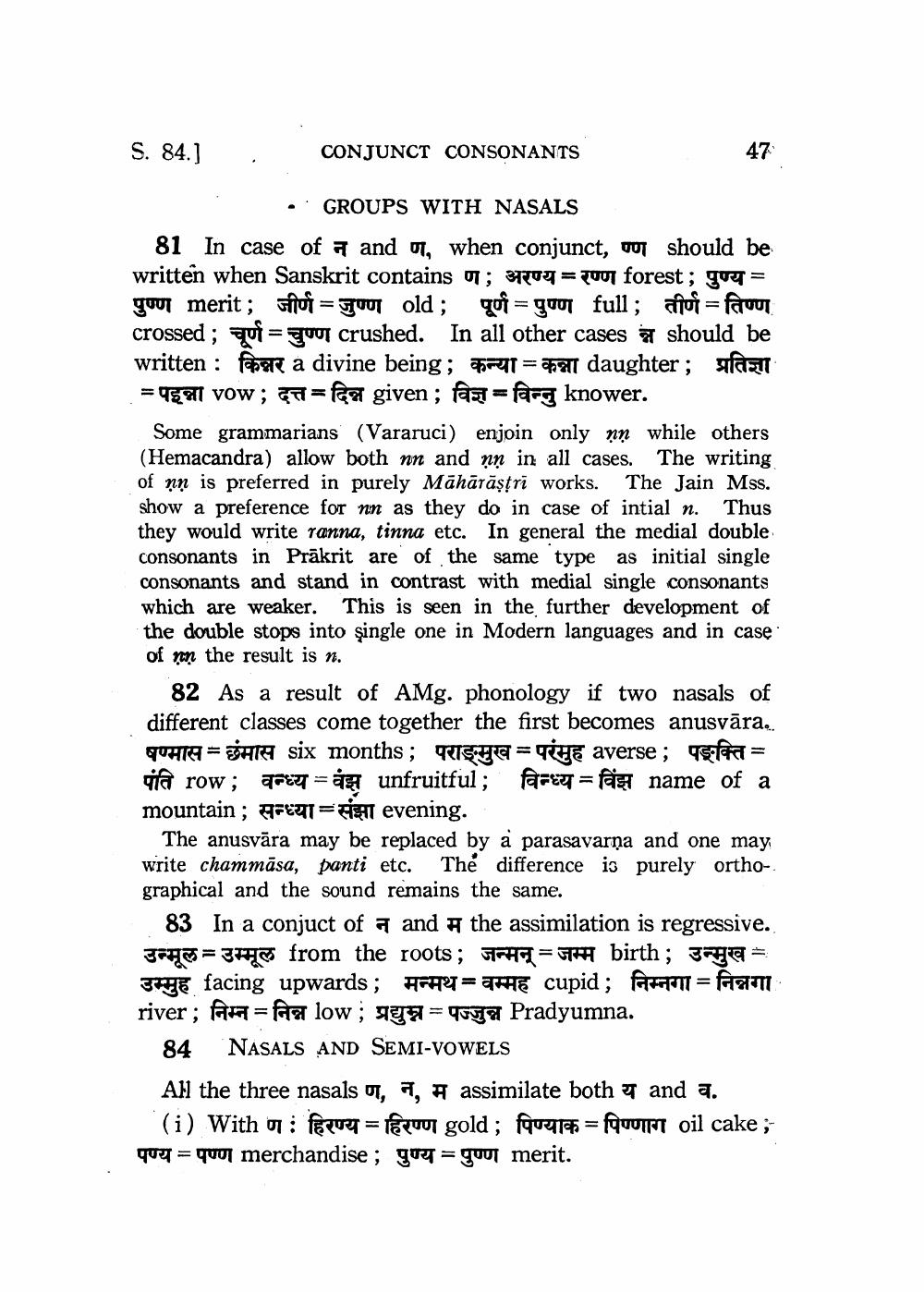________________
S. 84.)
.
CONJUNCT CONSONANTS
• GROUPS WITH NASALS 81 In case of a and , when conjunct, mu should be written when Sanskrit contains ण; अरण्य = रण्ण forest; पुण्य = gout merit; thui = Juul old ; qui = goot full; aloi = faoul crossed ; qui = Tuu crushed. In all other cases i should be written : किन्नर a divine being; कन्या = कन्ना daughter; प्रतिज्ञा =951 vow; a=fee given ; fast=fary knower.
Some grammarians (Vararuci) enjoin only nn while others (Hemacandra) allow both nn and nn in all cases. The writing of nn is preferred in purely Māhārāștri works. The Jain Mss. show a preference for nin as they do in case of intial n. Thus they would write ranna, tinna etc. In general the medial double consonants in Prākrit are of the same type as initial single consonants and stand in contrast with medial single consonants which are weaker. This is seen in the further development of the double stops into single one in Modern languages and in case of nn the result is n.
82 As a result of AMg. phonology if two nasals of different classes come together the first becomes anusvāra. quhr = EXHRI six months; TSJE= The averse; Tef= via row; qret = unfruitful; fredy = fale name of a mountain; सन्ध्या -संझा evening..
The anusvāra may be replaced by a parasavarṇa and one may, write chammāsa, panti etc. The difference is purely orthographical and the sound remains the same.
83 In a conjuct of a and # the assimilation is regressive. J 5 = 3 from the roots; HET= A birth; gre =
one facing upwards; H T=The cupid; farzatot = Free river; Affara low; yg = 45€ Pradyumna.
84 NASALS AND SEMI-VOWELS All the three nasals o, a, # assimilate both 2 and a.
(i) With 0 : fecue = lecuur gold; fque = fopoint oil cake ;quat=quo merchandise ; que=quut merit.




